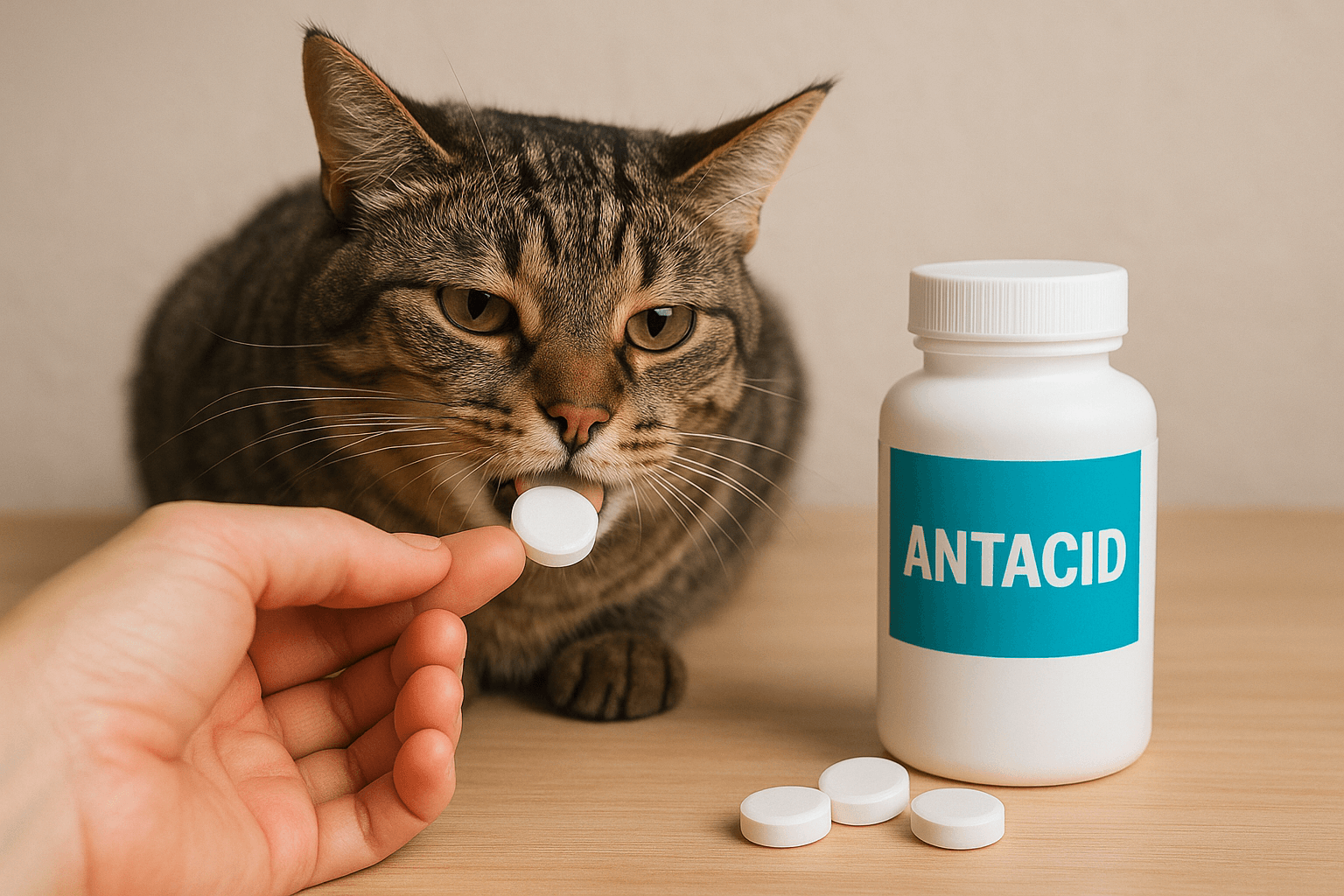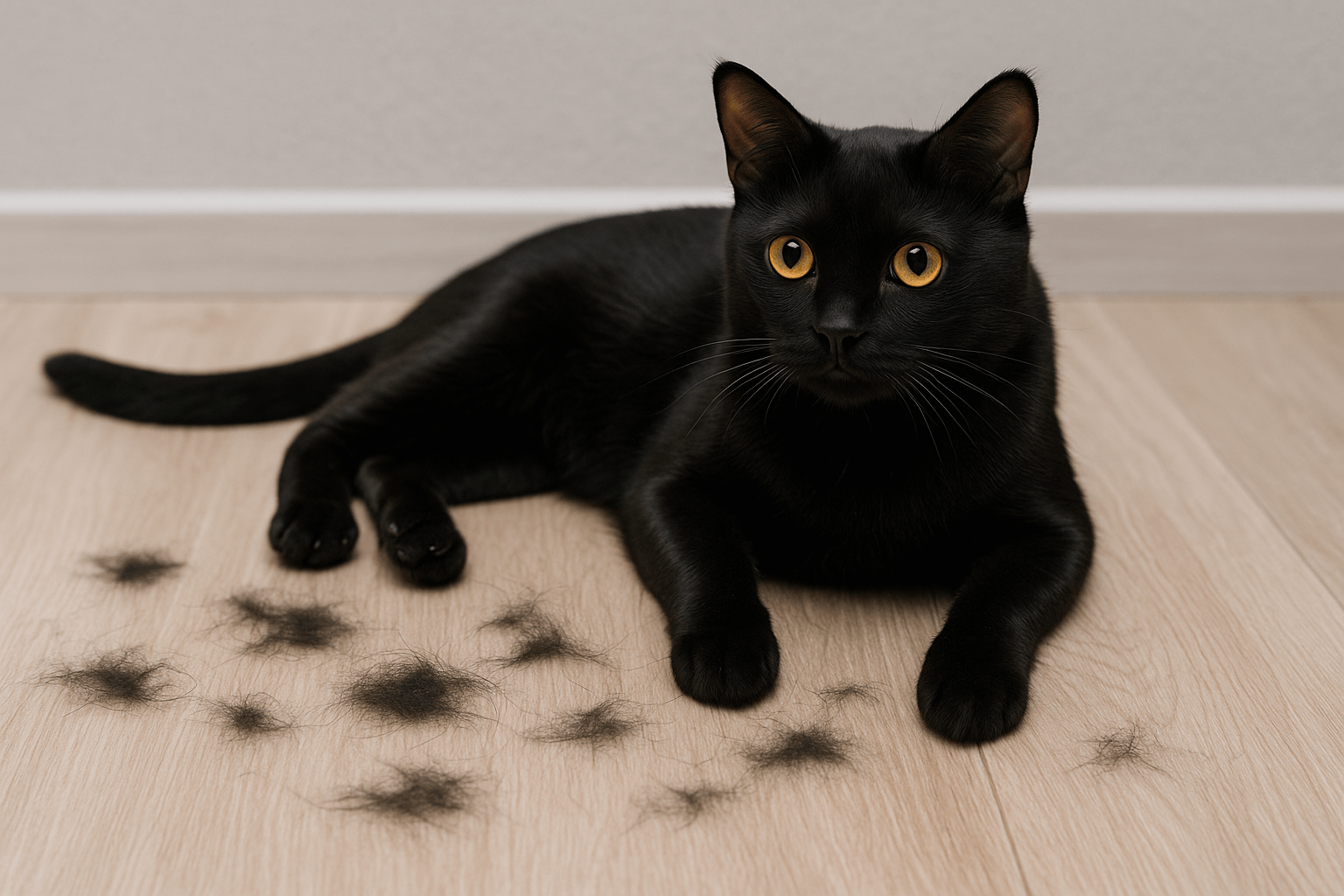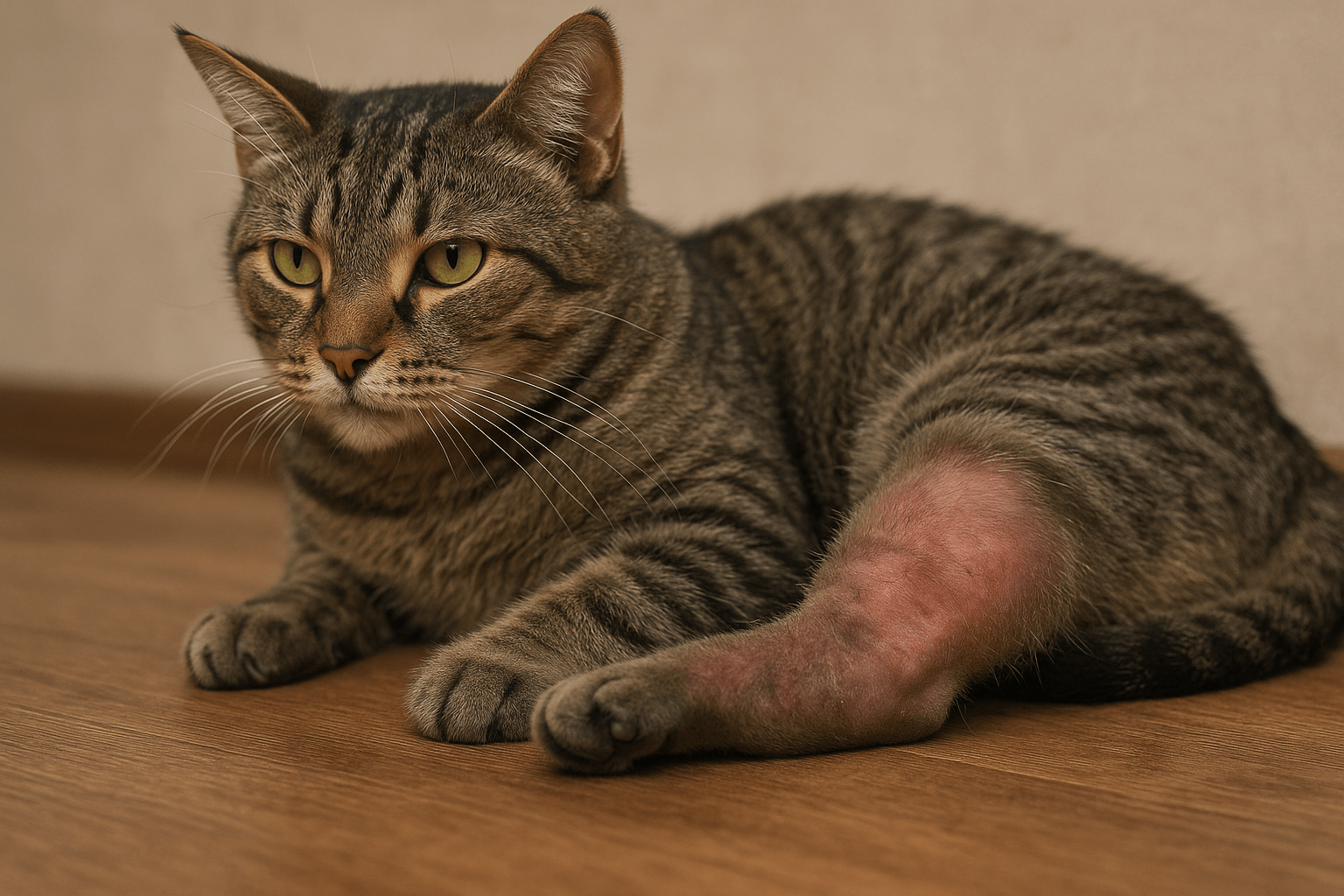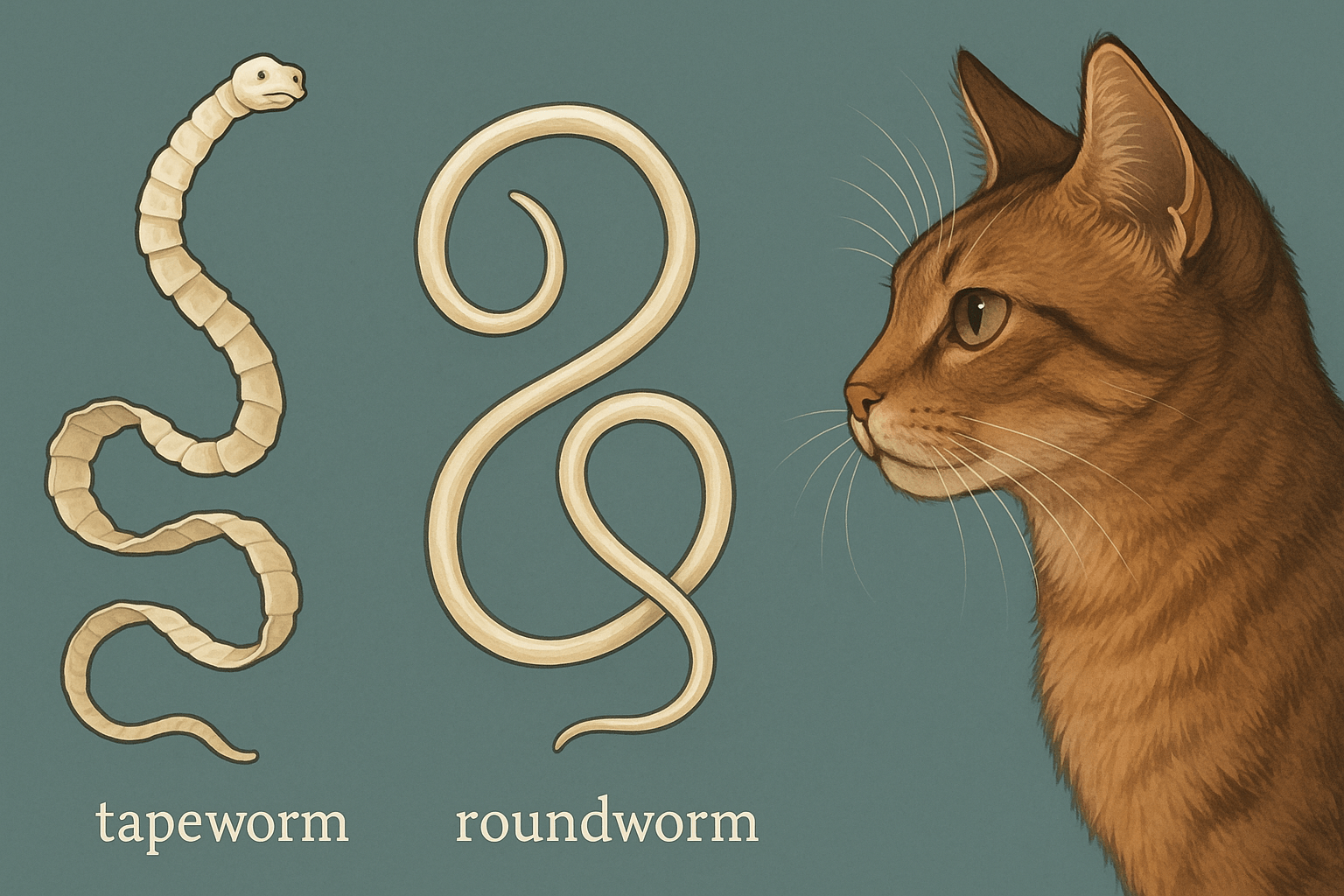Understanding Folliculitis in Cats
Folliculitis, a condition that affects the hair follicles, can be uncomfortable and concerning for both cats and their owners. While it’s not uncommon for cats to develop skin issues, folliculitis requires careful attention to ensure your feline friend remains healthy and happy. This inflammatory condition often presents as redness, swelling, or pustules around the affected areas, and it can stem from various causes, including infections, allergies, or parasites. Understanding the symptoms, causes, and treatment options is essential for addressing this condition effectively. In this guide, we’ll explore everything you need to know about folliculitis in cats, from identifying the signs to managing and preventing flare-ups.
Symptoms of Folliculitis in Cats
Recognizing the signs of folliculitis early can help you seek timely veterinary care and prevent complications. Keep an eye out for these common symptoms that indicate your cat may be suffering from this condition.
Red or Inflamed Skin:
The affected areas often appear red and irritated, signaling inflammation of the hair follicles.Pus-Filled Bumps or Pustules:
Small, raised bumps filled with pus are a hallmark of folliculitis and can rupture, leading to crusting.Hair Loss in Affected Areas:
Cats may experience patchy hair loss around the inflamed regions, especially if they excessively lick or scratch.Itching and Scratching:
Persistent scratching or licking of specific areas may indicate discomfort caused by folliculitis.Odor from the Skin:
Secondary bacterial infections can cause an unpleasant smell, which may accompany severe cases of folliculitis.
By staying vigilant and observing these symptoms, you can take proactive steps to address folliculitis before it worsens.

Common Causes of Folliculitis in Cats
Folliculitis doesn’t occur in isolation—it’s often triggered by underlying factors that affect your cat’s skin health. Identifying the root cause is crucial for effective treatment and prevention.
Bacterial Infections:
Harmful bacteria can invade hair follicles, leading to inflammation and infection. Staphylococcus is a common culprit.Parasites Like Fleas or Mites:
Parasitic infestations can irritate the skin and trigger folliculitis, especially in cats with sensitive skin.Allergic Reactions:
Food allergies, environmental allergens, or flea saliva can cause skin irritation that progresses to folliculitis.Poor Grooming Habits:
Cats that struggle to groom themselves due to obesity or arthritis may develop skin issues, including folliculitis.Underlying Health Conditions:
Conditions like feline acne, hormonal imbalances, or immune system disorders can predispose cats to folliculitis.
Addressing these underlying causes is key to managing and resolving folliculitis effectively.
Check this guide 👉Keratinized Skin Cysts in Cats: Best 7 Expert Tips!
Check this guide 👉Dry Skin on Cats: Best 7 Expert Tips!
Check this guide 👉What to Do About a Hole in Your Cats Skin: Best 7 Tips!
Prevention Tips for Folliculitis | Treatment Options for Folliculitis |
|---|---|
Regular grooming to keep fur clean | Antibiotics for bacterial infections |
Flea prevention using vet-approved products | Medicated shampoos to soothe inflammation |
Balanced diet to boost immune function | Topical creams for localized treatment |
Minimizing exposure to allergens | Anti-inflammatory medications if needed |
Routine vet check-ups for early detection | Surgical drainage for severe abscesses |
How to Diagnose Folliculitis in Cats
Diagnosing folliculitis requires a thorough evaluation by a veterinarian, as its symptoms can mimic other skin conditions. Here’s what to expect during the diagnostic process.
Physical Examination:
Your vet will inspect the affected areas and assess the severity of the inflammation or lesions.Skin Scrapings:
A sample of skin cells may be collected and examined under a microscope to rule out parasites like mites.Bacterial Culture Test:
If a bacterial infection is suspected, a culture test helps identify the specific strain causing the issue.Allergy Testing:
Blood tests or intradermal testing may be performed to determine if allergies are contributing to folliculitis.Biopsy (in Rare Cases):
For persistent or severe cases, a small tissue sample may be taken to analyze deeper layers of the skin.
A proper diagnosis ensures targeted treatment, improving your cat’s chances of recovery.
Home Care Tips for Managing Folliculitis
While professional veterinary care is essential, there are several steps you can take at home to support your cat’s healing process. These tips can complement prescribed treatments and promote faster recovery.
Keep the Area Clean:
Gently clean the affected areas with a damp cloth or vet-recommended wipes to prevent further irritation.Prevent Licking or Scratching:
Use an Elizabethan collar (cone) to stop your cat from aggravating the inflamed skin through excessive licking or scratching.Apply Warm Compresses:
For localized swelling or pus-filled bumps, warm compresses can help reduce discomfort and draw out impurities.Monitor Diet and Hydration:
Ensure your cat eats a balanced diet rich in omega-3 fatty acids, which can support skin health and reduce inflammation.Maintain a Stress-Free Environment:
Stress can weaken the immune system, exacerbating skin conditions. Provide a calm and comfortable space for your cat to rest.
With consistent care, these measures can aid in managing folliculitis and preventing recurrence.
Preventing Recurrence of Folliculitis
Preventing folliculitis from recurring involves addressing potential triggers and maintaining good hygiene practices. Here are some strategies to reduce the likelihood of future outbreaks.
Regular Vet Visits:
Schedule routine check-ups to monitor your cat’s skin health and catch issues early.Consistent Parasite Control:
Use monthly flea and tick prevention products to protect your cat from parasitic infestations.Dietary Adjustments:
Incorporate high-quality proteins and essential nutrients into your cat’s diet to strengthen their skin barrier.Minimize Environmental Irritants:
Reduce exposure to harsh chemicals, dust, or allergens that could irritate your cat’s skin.Gentle Bathing Practices:
Bathe your cat sparingly with hypoallergenic shampoos to avoid stripping natural oils from their coat.
Proactive prevention can significantly lower the chances of folliculitis returning.
When to Seek Immediate Veterinary Help
While mild cases of folliculitis can often be managed at home, some situations require urgent veterinary attention. Knowing when to act quickly can make all the difference.
Severe Swelling or Pain:
If the affected area becomes extremely swollen or painful, it may indicate a deeper infection requiring immediate care.Fever or Lethargy:
Symptoms like fever or unusual lethargy suggest a systemic infection that needs prompt treatment.Rapid Spread of Lesions:
If the inflammation spreads rapidly across large areas of the body, consult your vet without delay.Persistent Bleeding or Oozing:
Continuous discharge from lesions may signal a more serious underlying issue.Refusal to Eat or Drink:
Loss of appetite or dehydration indicates your cat is feeling unwell and requires medical intervention.
Acting swiftly ensures your cat receives the care they need to recover safely.
Supporting Immune Health to Combat Folliculitis
A strong immune system plays a vital role in preventing and managing folliculitis. Boosting your cat’s immunity can enhance their ability to fight off infections and maintain healthy skin.
Provide Nutrient-Rich Foods:
Feed your cat a diet rich in vitamins A, E, and C, which are known to support skin and immune health.Supplement with Omega-3 Fatty Acids:
Fish oil supplements can reduce inflammation and promote a shiny, healthy coat.Encourage Play and Exercise:
Physical activity stimulates blood circulation, which aids in nutrient delivery to the skin.Reduce Stress Levels:
Chronic stress weakens immunity; create a peaceful environment to help your cat relax.Ensure Proper Vaccinations:
Keeping your cat up-to-date on vaccinations protects against diseases that could compromise their immune system.
Strengthening your cat’s immunity equips them to better handle skin challenges like folliculitis.
Frequently Asked Questions About Folliculitis in Cats
Can folliculitis go away on its own?
Mild cases may resolve with time, but untreated folliculitis can worsen or lead to secondary infections. Veterinary intervention is recommended.
Is folliculitis contagious to other pets?
It depends on the cause—if parasites or certain bacteria are involved, transmission is possible. Isolate affected animals until treated.
How long does treatment typically take?
Treatment duration varies based on severity, but most cases improve within 2–4 weeks with proper care.
Can diet influence folliculitis?
Yes, poor nutrition or food allergies can contribute to skin issues. Consult your vet about dietary changes if needed.
What should I do if my cat keeps licking the affected area?
Use an Elizabethan collar to deter licking and consult your vet to address any underlying discomfort or itchiness.
Supporting Your Cat Through Folliculitis
Folliculitis may seem daunting, but with prompt veterinary care and attentive home management, your cat can recover fully and return to their playful self. By understanding the causes, recognizing the symptoms, and implementing preventive measures, you can minimize the risk of future flare-ups. Remember, your cat’s skin health reflects their overall well-being—providing a balanced diet, regular grooming, and a stress-free environment goes a long way in keeping them happy and healthy. With love and care, you can help your furry companion overcome folliculitis and enjoy a life free of discomfort.
Cat Antacid: Best 7 Expert Tips! Discover safe antacid options, dosage guidelines, and expert advice to soothe your cat’s stomach and promote digestive health effectively.
Do Bombay Cats Shed? Best 7 Expert Tips! Discover expert advice on managing shedding, grooming tips, and why Bombay cats are low-shedding companions for a clean, stylish home.
What Causes a Swollen Cat Leg? Best 7 Expert Tips! Discover expert advice on identifying causes, symptoms, and treatments for a swollen cat leg to ensure your pet’s health and comfort.
Tapeworm vs Roundworm in Cats: Best 7 Expert Tips! Learn to identify, prevent, and treat tapeworms and roundworms in cats with expert advice for a healthy, parasite-free feline companion.





